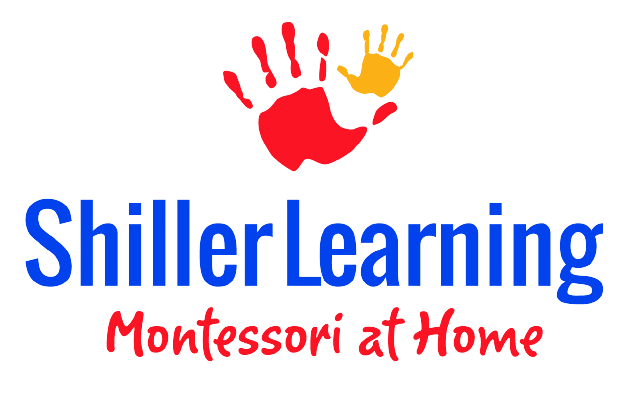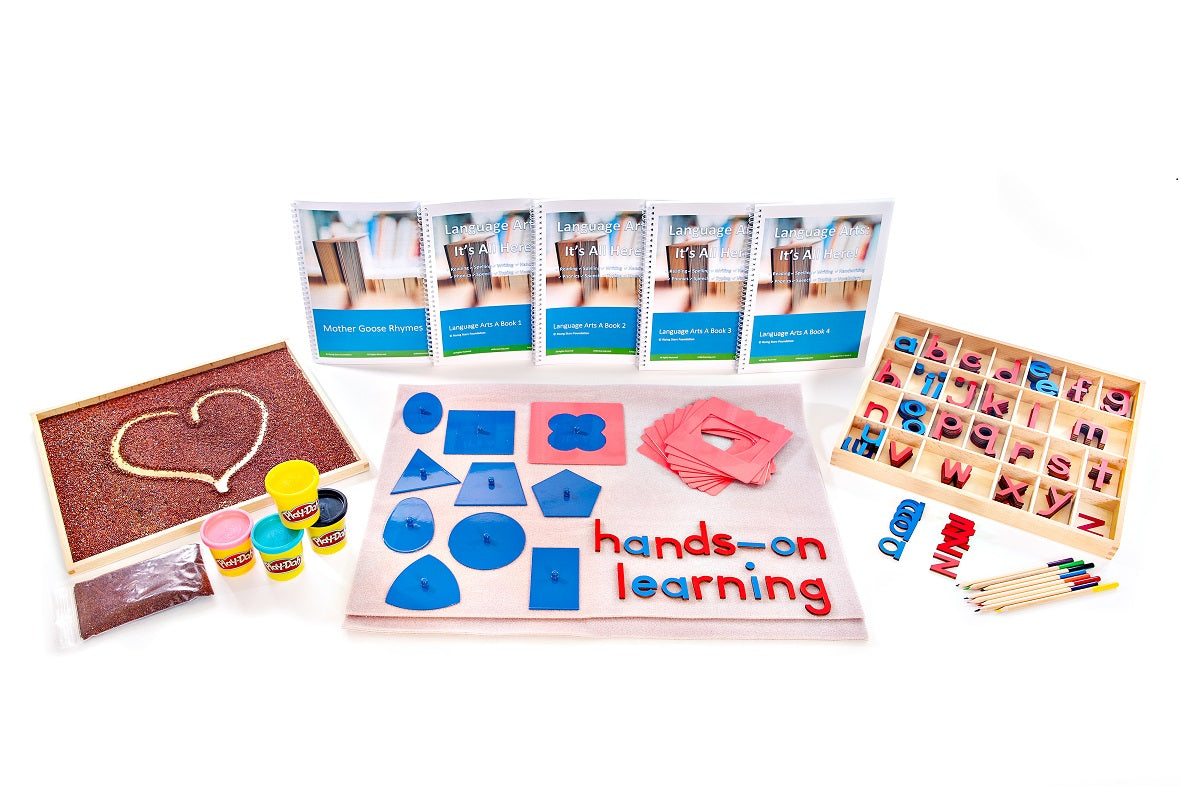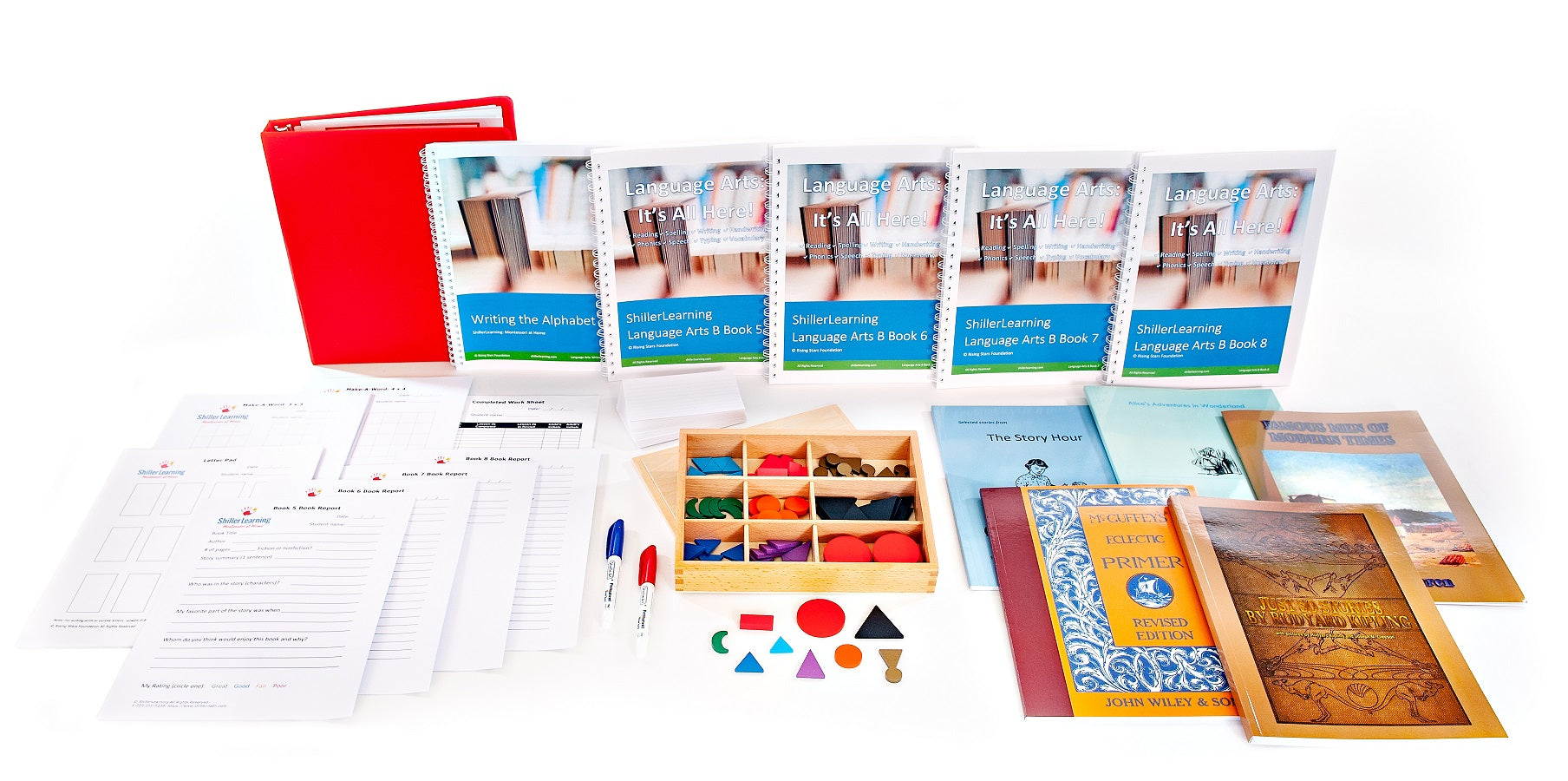"What the hand does, the mind remembers." - Maria Montessori
Research shows over 7% of students experience severe learning disabilities in math. Countless more struggle because of the way the language of math is spoken to them. You might as well be speaking Greek. Our goal at ShillerLearning is to make math understandable for every child with hands-on, exploratory learning – learning by doing.
Is your child struggling with math or would you like to avoid your child having math problems in the first place? The decimal material (also known as base ten blocks) paired with Montessori number cards are a game-changer for students young and old. I wonder how many parents, who themselves struggled with math as children, would have had an easier time learning (and even loving) math if they had worked with these tools.
As Dr. Maria Montessori so eloquently stated, "What the hand does, the mind remembers."
Together these hands-on tools make the decimal system and place value visually obvious and number sense easy to acquire – something with which many students struggle. These easy-to-use manipulatives and accompanying activities set your child up for math success and banish the tears and frustration. They provide a concrete introduction to the decimal system in an amazingly understandable way and can be added to any math instruction.
What are they?
The decimal material physically represent each place value category. There are unit cubes (1 cm x 1 cm x 1 cm), ten rods (1 cm x 10 cm x 1 cm), hundred flats (10 cm x 10 cm x 1 cm), and thousand cubes (10 cm cubed). Used in sufficient quantity, these math manipulates not only help children visually quantify each place value amount, but instruct in and provide learning by doing for inequalities, multi-digit operations (addition, subtraction, multiplication, and division), exchanges within operations (borrowing and carrying), skip counting, and more.
The decimal material is introduced using the Montessori three-period lesson – a simple, but effective gap preventer that ensures the student understands the concepts and materials being used. The ShillerLearning YouTube channel features videos on the three-period lesson, as well as doing operations with the decimal material and number cards.
First the units are used to introduce and strengthen the recognition of quantities one through nine. The materials are then paired with number cards to learn the symbols – the numerals – 1 through 9.
The number cards help children recognize the numerical symbols for each place value category of the decimal system. One of the fringe benefits of the number cards for students with special needs is that they empower students to work with numbers without having to be able to write numbers. The number cards consist of four sets of cards for the first four different categories of numbers in the decimal system (base ten). The smallest sized cards are numerals 1 – 9 (units/ones), increasing in size algorithmically for place value with numerals 10 to 90 (tens), 100 to 900 (hundreds), and 1000 to 9000 (thousands). The cards are color-coded for place value in green, blue, and red with the color pattern repeating for each new place value family - everywhere a comma goes. If we were to create cards in higher place values, the color pattern would continue. Ten thousands would be blue and hundred thousands would be red.
With success achieved in numbers one through nine, students are ready to learn place value into the thousands! As they work with the material, they also discover that if we count beyond the number nine in any decimal (place value) category, we continue counting into the next highest category.
Abstract, sometimes difficult concepts become hands-on, concrete, interactive. This introduction and exploration of numbers is unparalleled in creating a solid number sense and understanding of place value – the cornerstone of a solid math foundation.
The magic continues as you work with operations: addition, subtraction, multiplication, and division. Students learns 4-digit static addition (addition without an exchange, commonly referred to as carrying), doing in the concrete with the materials and number cards what they will later do on pencil and paper. Once that skill is mastered, they learn to play the exchange game where various quantities of a place value are combined; when ten is reached, it is traded in the materials bank for the next place value, adding that to whatever is left over. Now the student is ready for dynamic addition – addition with an exchange (addition with carrying).
Here is a peek at 4-digit addition with exchange. The following is a summary of activities that are scripted in the ShillerLearning Math Kit I, Lesson Books 1 and 2.
◼ First, the problem is constructed on the work mat with the number cards and addition sign.
◼ Then, the decimal material (base ten blocks) for the first addend are laid out with the number cards.
Repeat for the second addend.
◼ Now we do in the concrete exactly what the student will do later abstractly with pencil and paper. First, bring down the units (ones) and lay the 9 number card below them.
◼ Next, we bring down the tens. In this case, we have 13.
◼ We trade 10 of those tens in for 1 hundred flat, keeping the remaining 3 tens.
◼ We show that the hundred flat goes above the hundreds column, just like they will do abstractly with pencil and paper.
That floating one on the paper which is confusing to many students is no longer mysterious. They have experienced exactly what it represents.
◼ Then, you guessed it, bring down the hundreds, lay out the 500 number card, bring down your thousands, and lay out the 3000 number card.
Finally, the problem is read as a whole, overlapping the cards as you read it: 2192 plus 1347 equals 3539.
A ruler may be used as the equal sign bar as shown on the right.
Here is a video that pulls it all together with a different example.
You will be amazed at how quickly young children achieve conceptual understanding as well as success in performing operations – preventing math struggles from occurring. The activities are also a powerful remediation for older students struggling with math for a variety of reasons and crucial support for students with special needs. These are two math manipulatives that will promote the success of every student in homeschool math.
The decimal material and number cards are available separately and can be added to any math program. They are both included in Math Kit I (covers pre-k, kindergarten, 1st grade, 2nd grade, and 3rd grade).






